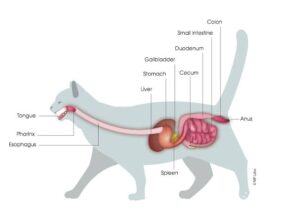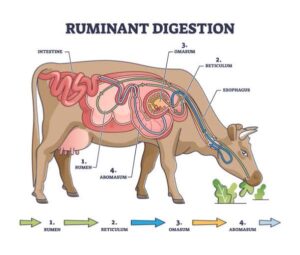Back to: ZOOLOGY 400 Level
Welcome to class!
Hi there, superstar! I’m so glad you’re here again, ready to grow that brilliant brain of yours. Today, we’re going to talk about something you’ve experienced every single day — even today! It’s all about Mechanical and Chemical Digestion. Whether you’ve eaten eba, rice and stew, or a bowl of cereal, your body goes through a beautiful process to turn that food into fuel. Let’s find out exactly how it happens.
Mechanical And Chemical Digestion
What is Digestion?
Digestion is how your body breaks down food into smaller parts that it can use for energy, growth, and repair. This process happens in two main ways — mechanical digestion and chemical digestion.

Mechanical Digestion
This is the physical breaking down of food into smaller pieces. It doesn’t change the chemical structure of the food, but it makes it easier for the body to work on.
Mouth (Chewing): When you chew amala or bread, your teeth break the food into smaller parts. This is the first step of mechanical digestion.
Stomach (Churning): The muscles in the stomach wall squeeze and mix the food with digestive juices. Imagine the way ogi is stirred in a pot — that’s how your stomach works on food!
Example: When you eat a roasted corn cob, your teeth first crush it, and then your stomach muscles move it around like a washing machine.
Chemical Digestion
Now this is the process that actually changes the food using special chemicals called enzymes. These enzymes break down big food molecules like proteins, carbohydrates, and fats into smaller ones your body can absorb.
Saliva in the Mouth: Your spit contains an enzyme called amylase, which starts breaking down starches (like those in yam or rice) right in your mouth.
Stomach Juices: Your stomach releases hydrochloric acid and pepsin, which break down proteins like those in meat and eggs.
Small Intestine Enzymes: The pancreas and liver also release juices that help finish the job in the small intestine.
Example: When you eat beans, the protein is broken down in the stomach by pepsin, and the remaining food is further digested by pancreatic enzymes in the small intestine.

Why Both are Important
Mechanical digestion makes food smaller and easier to move, while chemical digestion breaks it down into nutrients your blood can carry to every part of your body. They work hand-in-hand like a good teamwork duo — you can’t do one without the other!
Summary
- Digestion is the breakdown of food into usable nutrients.
- Mechanical digestion is the physical breakdown of food (e.g., chewing, churning).
- Chemical digestion uses enzymes and acids to break down food at the molecular level.
- Saliva begins chemical digestion in the mouth; the stomach and small intestine continue the process.
- Both mechanical and chemical digestion are essential for proper nutrient absorption.
Evaluation
- What is the difference between mechanical and chemical digestion?
- Give two examples of mechanical digestion in the body.
- What role does saliva play in digestion?
- Name two substances found in the stomach that help with chemical digestion.
Why are both forms of digestion important for the body?
You’re doing a fantastic job! Every lesson you take brings you one step closer to becoming the best version of yourself. Keep showing up, stay confident, and remember that Afrilearn is always here to support your journey with love, knowledge and plenty of encouragement. You’ve got this — keep shining!
